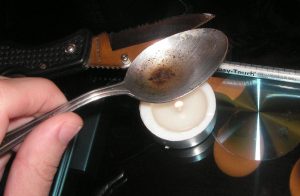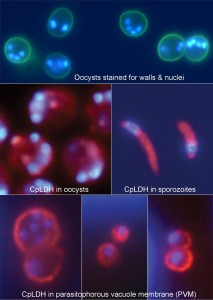The manager of a Little Caesars Pizza in Shelbyville, Indiana, and her boyfriend have been arrested for allegedly using and buying drugs during work. According to police, Sasha Fletcher and Joshua Parson were taken into custody after an anonymous source told the feds the couple was regularly using heroin in the restaurant and preparing food with open sores.
 The arrest underscores the well-known problem of drug and alcohol use and abuse in American restaurants.
The arrest underscores the well-known problem of drug and alcohol use and abuse in American restaurants.
Tove Danovich of NPR reports that while alcohol is eschewed in most places of employment, it’s a constant in restaurants. And the late night culture means that most socializing happens at bars after work hours. “We’re an industry that’s a little bit different,” says Mickey Bakst, general manager of Charleston Grill in South Carolina. But this also means restaurant employees are at serious risk for problems with substance abuse.
In 2016, after Charleston chef Ben Murray committed suicide after struggling with addiction and depression, Bakst and restaurateur Steve Palmer decided to start a support group of sorts to keep it from happening again.
Ben’s Friends, as the organization is called, now has Sunday meetings in three cities in South Carolina and Georgia. Bakst describes the meetings as “open-ended, gut wrenching at times, discussions about the difficulties of working in the industry.” They might talk about what to do when you’re in recovery and at work in the kitchen and the restaurant is packed, your chef is screaming. “You’re doing everything you can to stay sober but the stress level is through the roof.”
It’s kind of like AA, but tailored to the restaurant business — their only requirement is that attendees have a desire to overcome their addiction.
“You need someone who gets that, and understands the specific pressure of being surrounded by alcohol and revelry and drugs all the time,” says Kat Kinsman, senior food and drinks editor for Extra Crispy. In 2016, Kinsman also founded Chefs with Issues, a resource dedicated to de-stigmatizing mental health issues in the industry by providing a safe space for restaurant workers to share information and discuss their problems.
She has been open about her own experiences with depression and anxiety and wrote a book called Hi, Anxiety. She frequently had chefs confide in her about their own struggles and wanted to create a forum to publicize how rampant addiction, mental illness, and other issues are for people in the restaurant industry.
According to a 2015 study by the Substance Abuse and Mental Health Services Administration, the food service and hospitality industry has the highest rates of substance use disorders and third-highest rates of heavy-alcohol use of all employment sectors.
Is writing still #1?
 Two years ago, Shannen Martin, 34, was arrested during a theft investigation at an H-E-B grocery store in Corsicana, Texas, police said. She was handcuffed and put in the patrol vehicle after resisting the cops, police said.
Two years ago, Shannen Martin, 34, was arrested during a theft investigation at an H-E-B grocery store in Corsicana, Texas, police said. She was handcuffed and put in the patrol vehicle after resisting the cops, police said.


